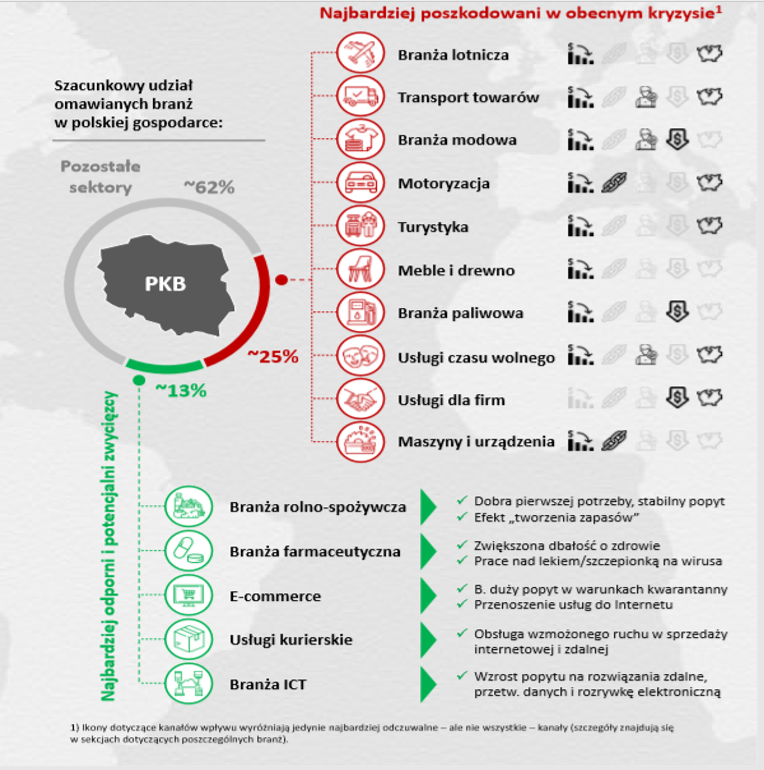
We all observe how many industries, such as events, hotel and catering, have frozen in recent months.In the Bank Pekao report entitled “Economy during a pandemic. Sector view based on the first global experience”, an estimation shows how many industries crisis has affected negatively and also highlights ones that have reached new development potential.These findings have a significant impact on how you should think about target groups these days, especially in more expensive categories.Without going into details, we can immediately see that in fact, a quarter of the market must make the most radical actions to survive. Both the owners of these companies and employees will minimize their expenses and will not consider new cars, apartments, furniture or expensive holidays. We can also assume that “grey 62%” will also hold its breath for a long time and postpone larger corporate and private purchases for later.
This is obviously of great importance for B2B. But also for B2C, for the more engaging categories whose products are more expensive, and for premium brands, the lifeline can be a group of “green 13%”, i.e. potential winners. It is there that statistically one person will buy the most new cars, apartments, expensive perfumes, holidays, household appliances, furniture, sports equipment, etc.
What are the implications for communication? Large.
In the “old days”, when the premium client came from virtually every industry, this criterion did not seem to be crucial when planning campaigns for more expensive products. Psychographic and behavioral issues were more important, and selective targeting was based on this. Now, when many industries are automatically “cut” and only 13% will grow, we can see a renaissance of the affinity instead of coverage media approach. We can expect that databases of companies from particular industries will become even more important, and creating media plans for premium products may include somewhat forgotten industry media such as magazines, websites, but will also popularize campaigns carried out on LinkedIn.

